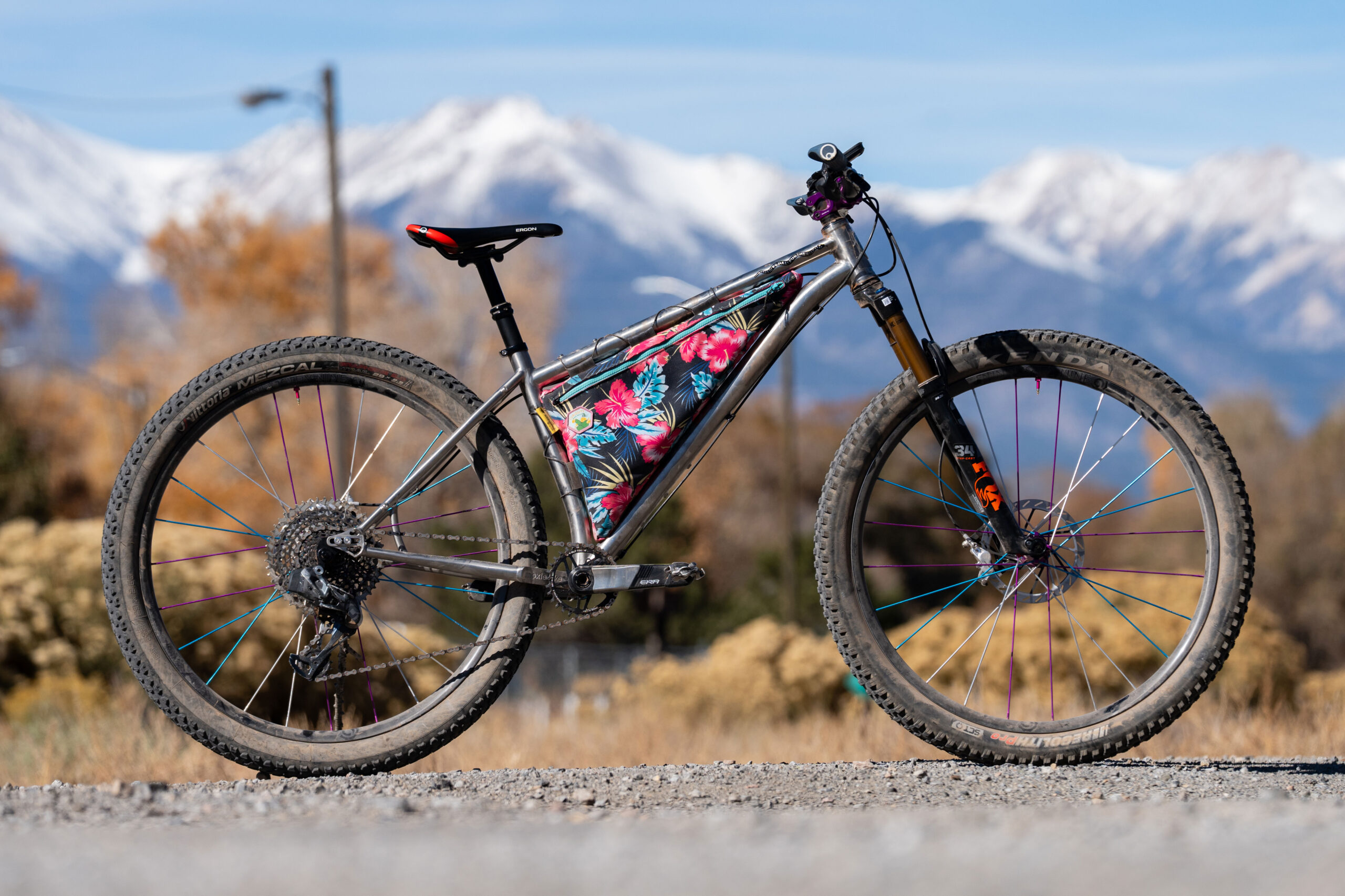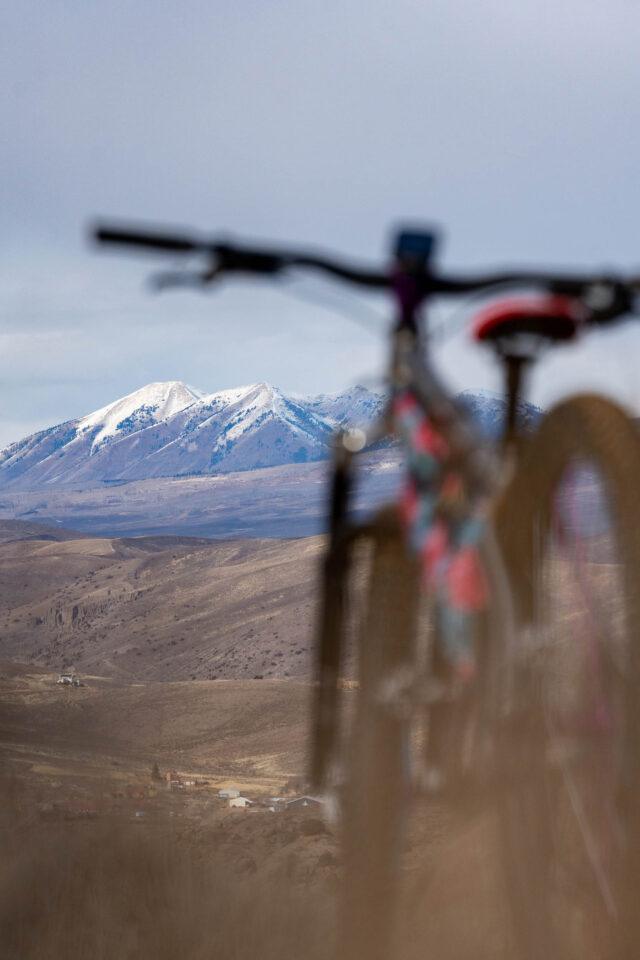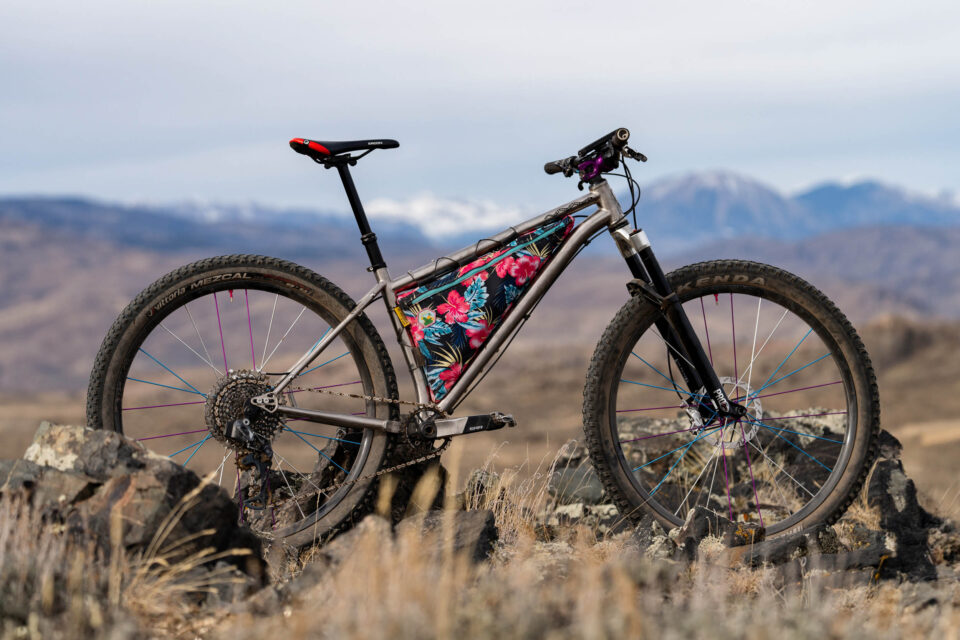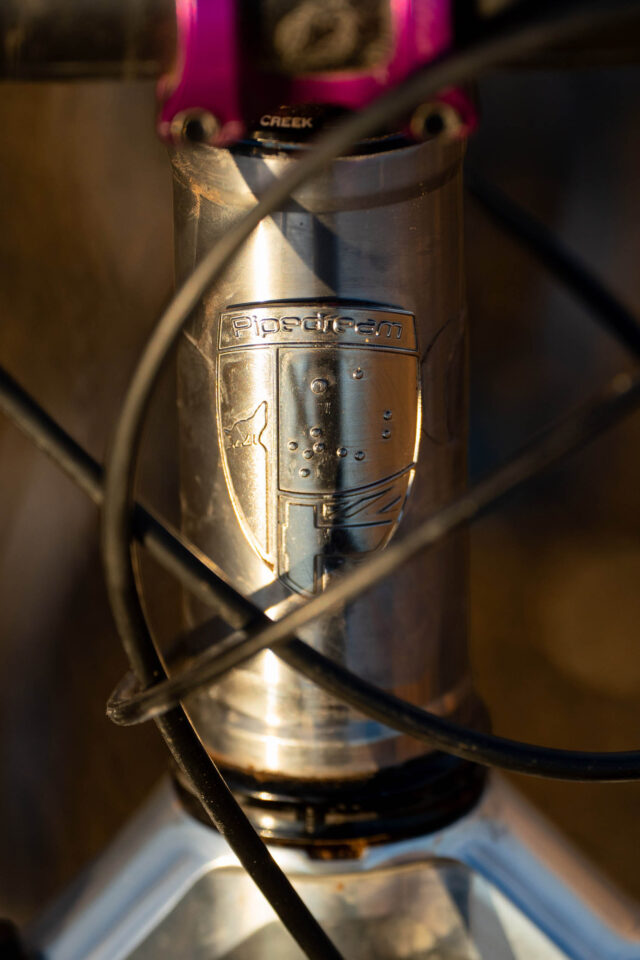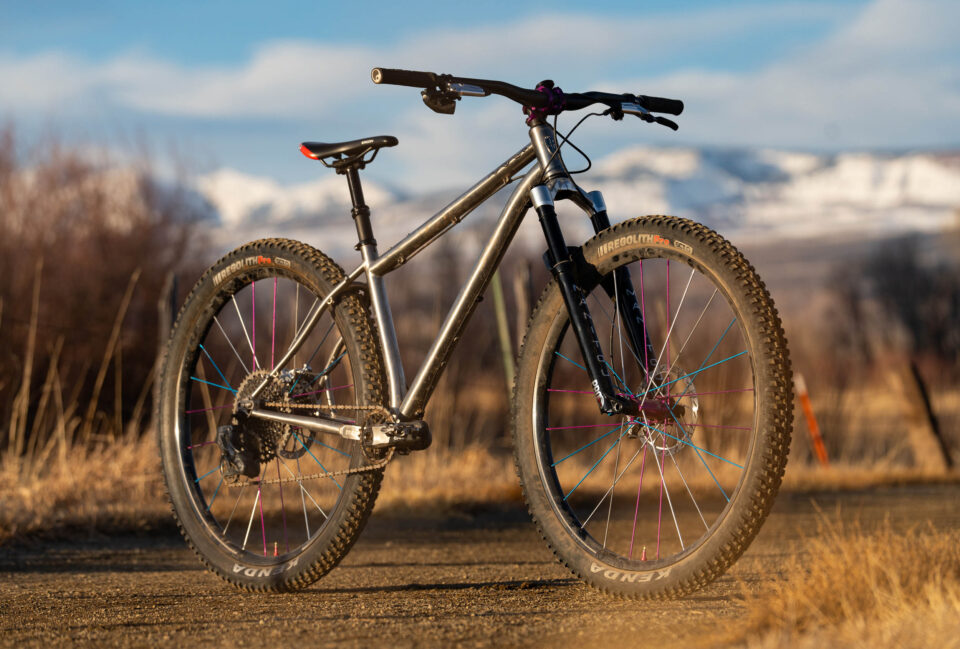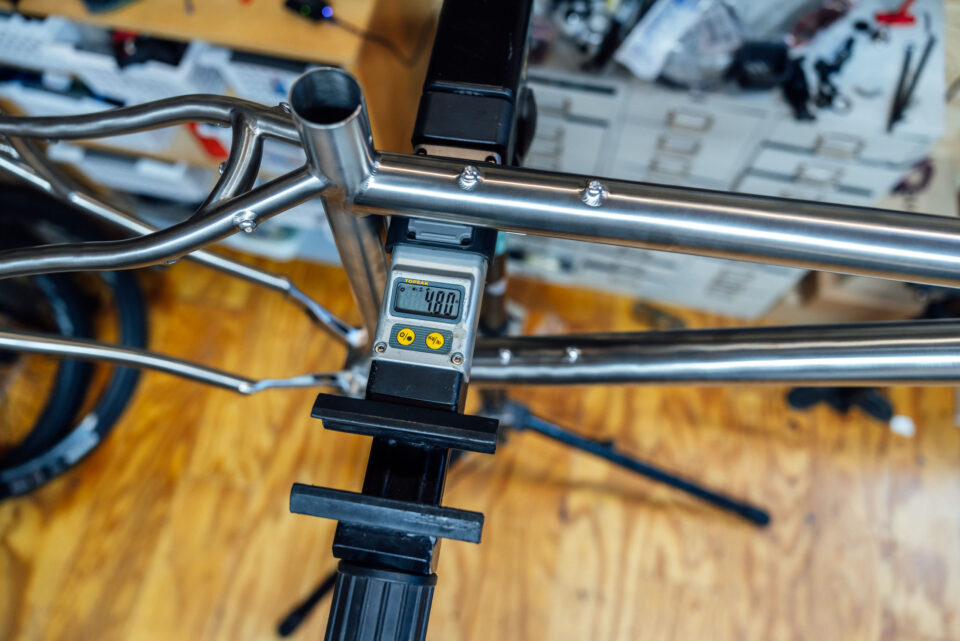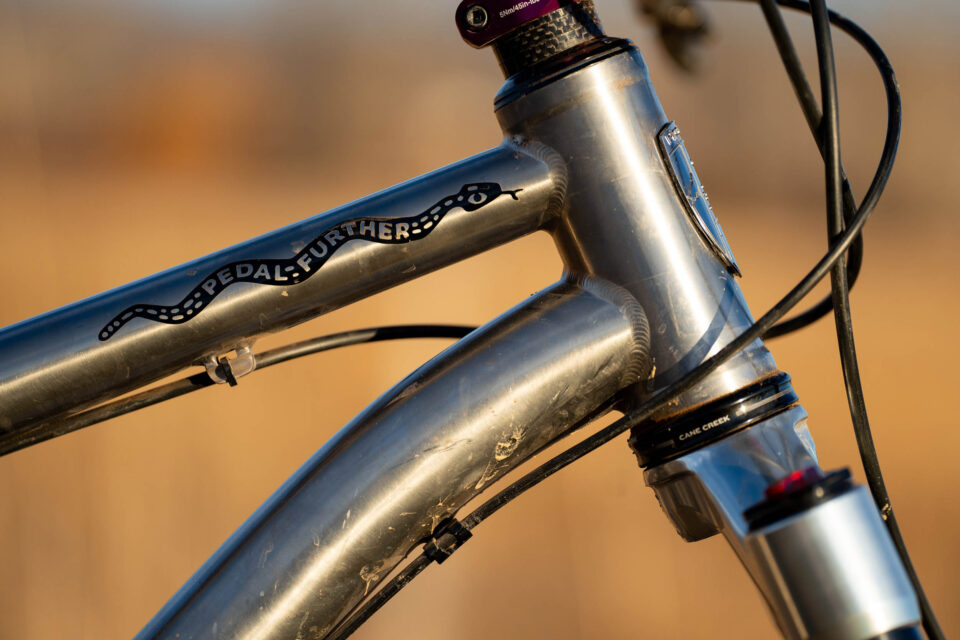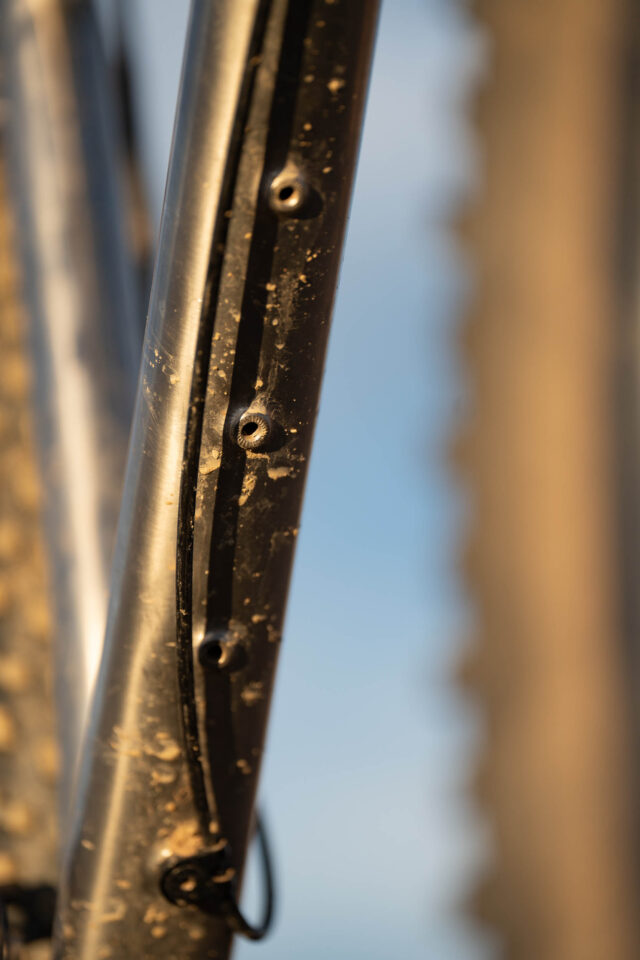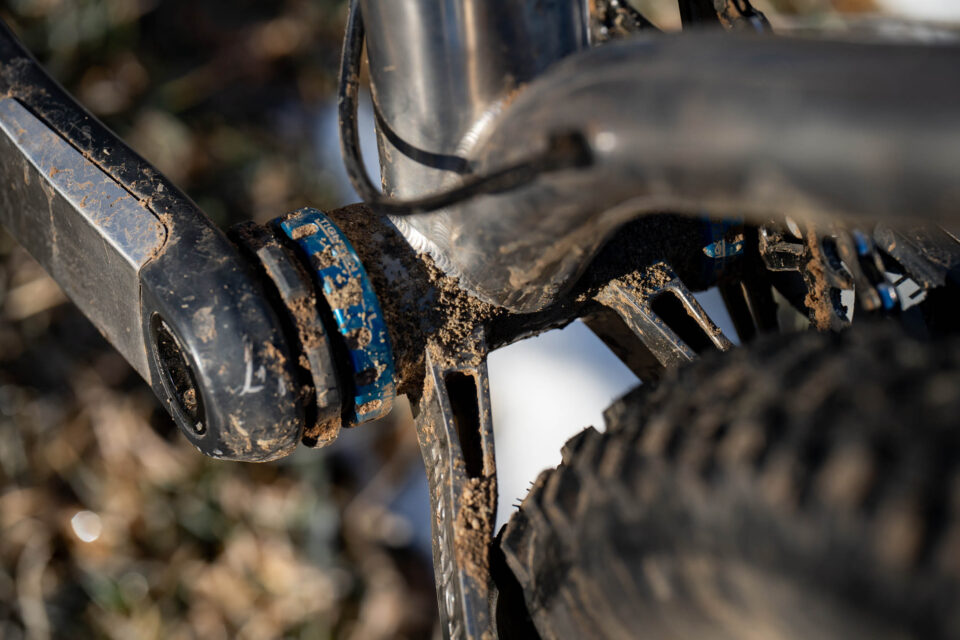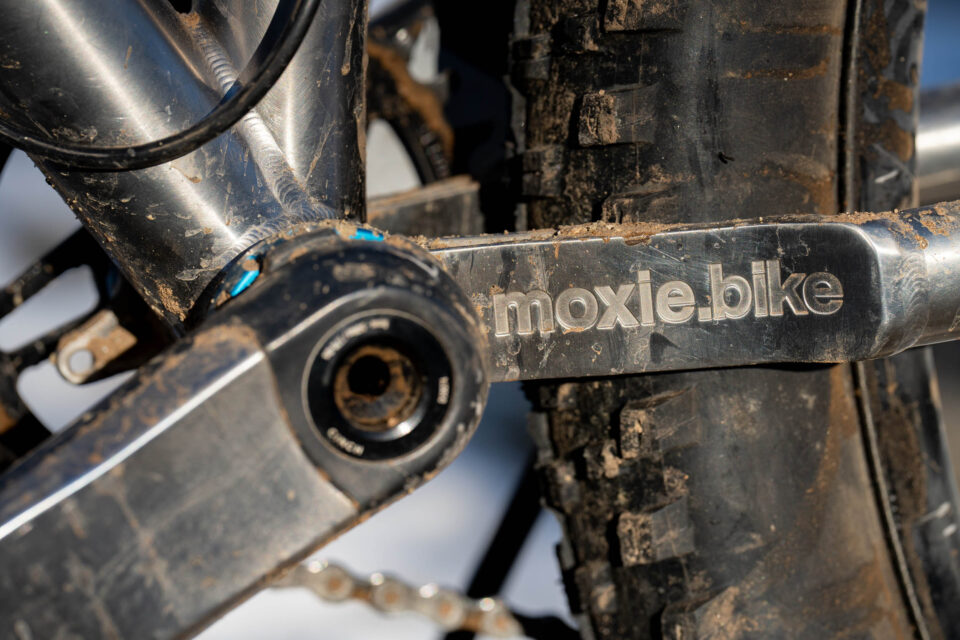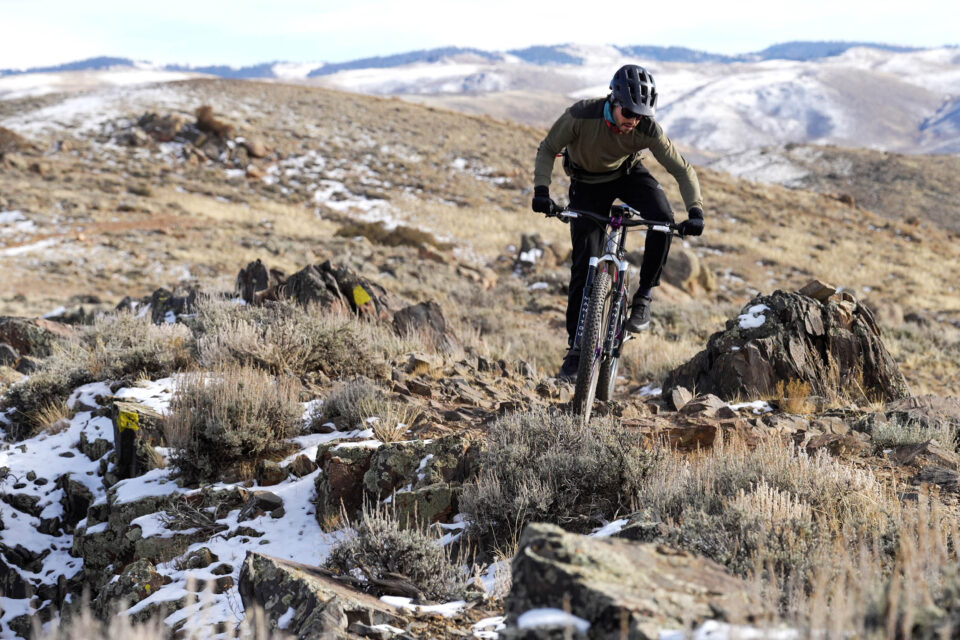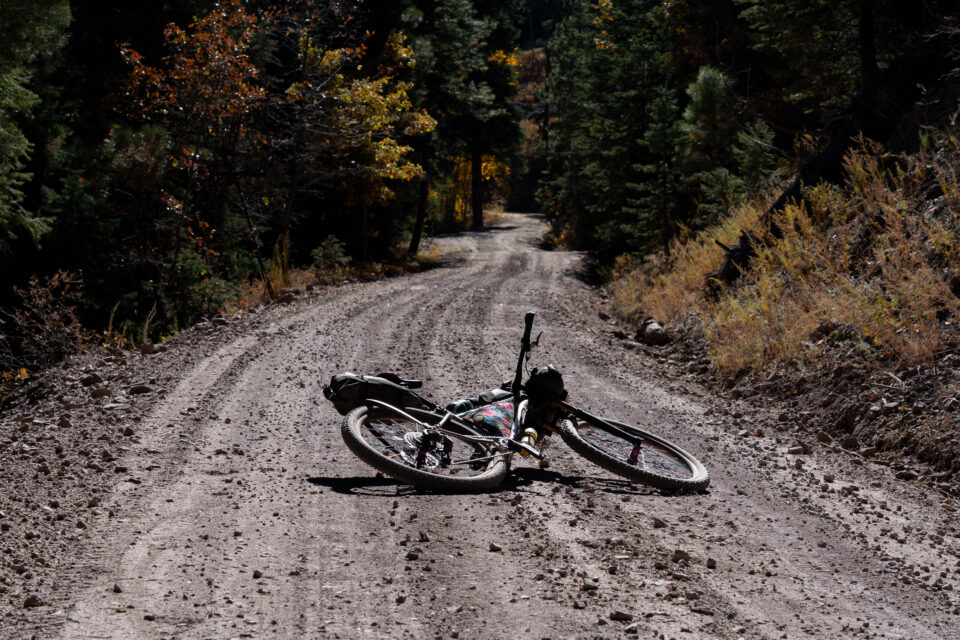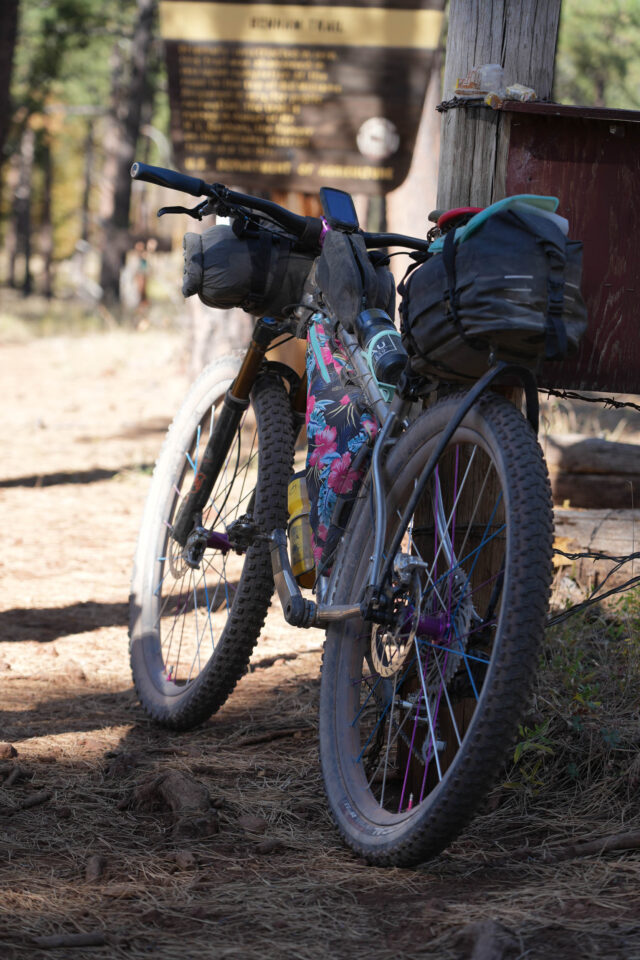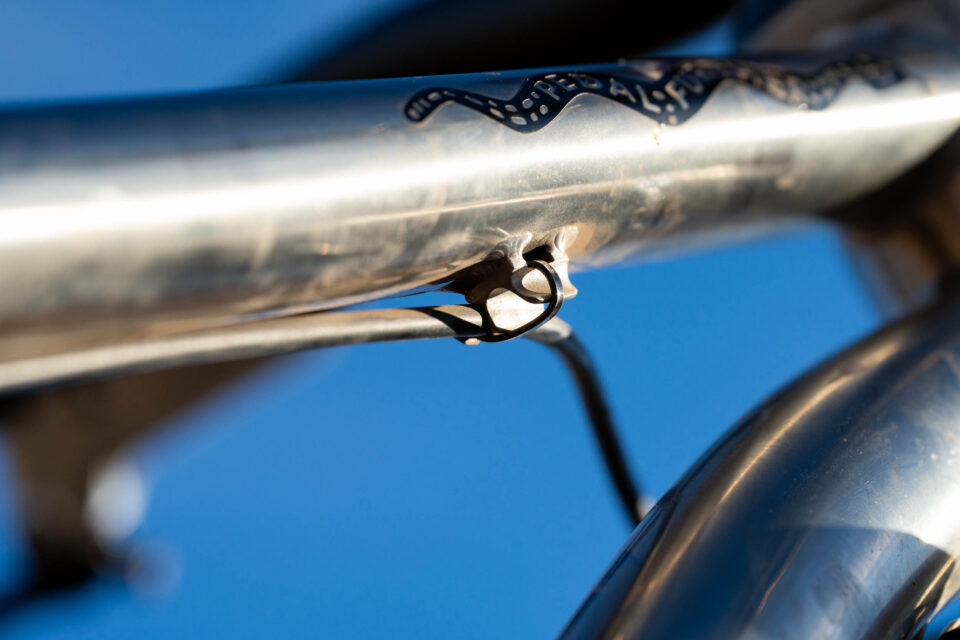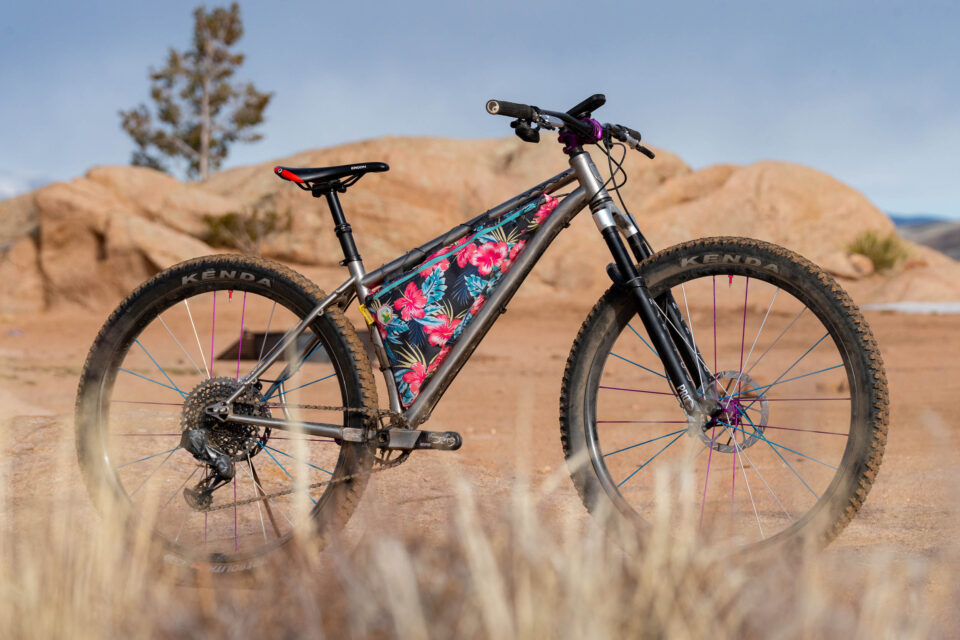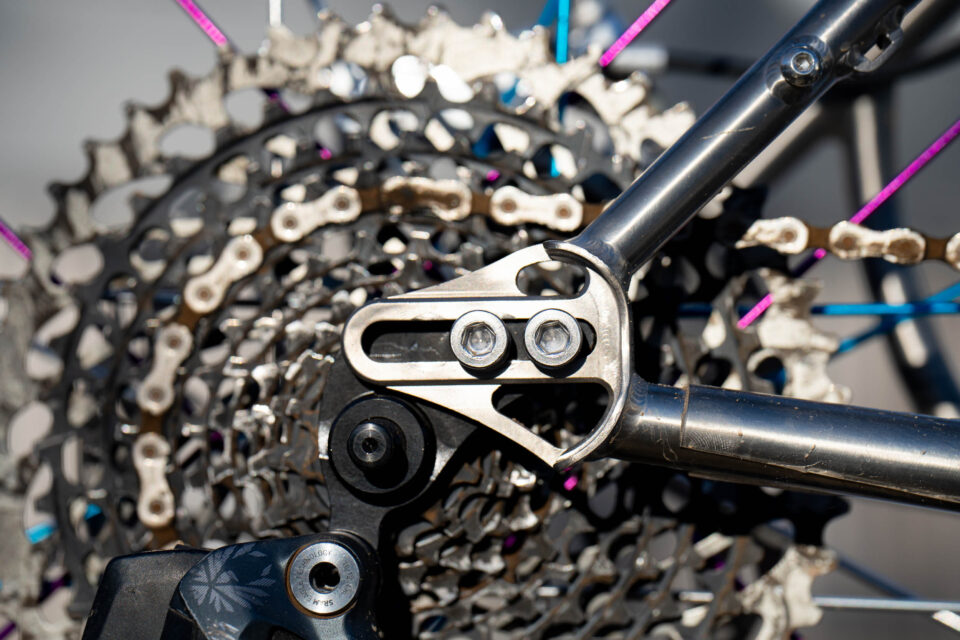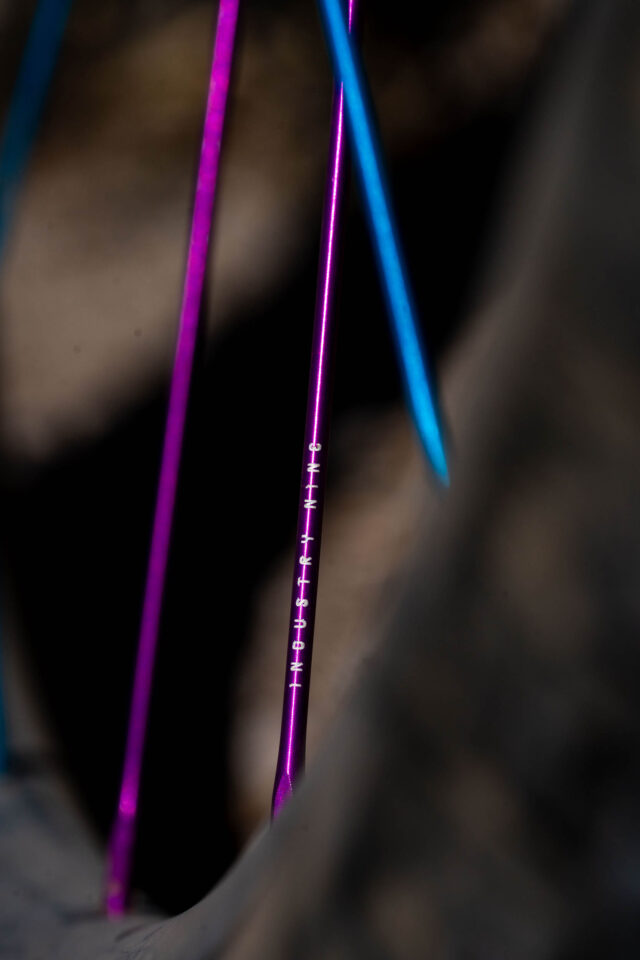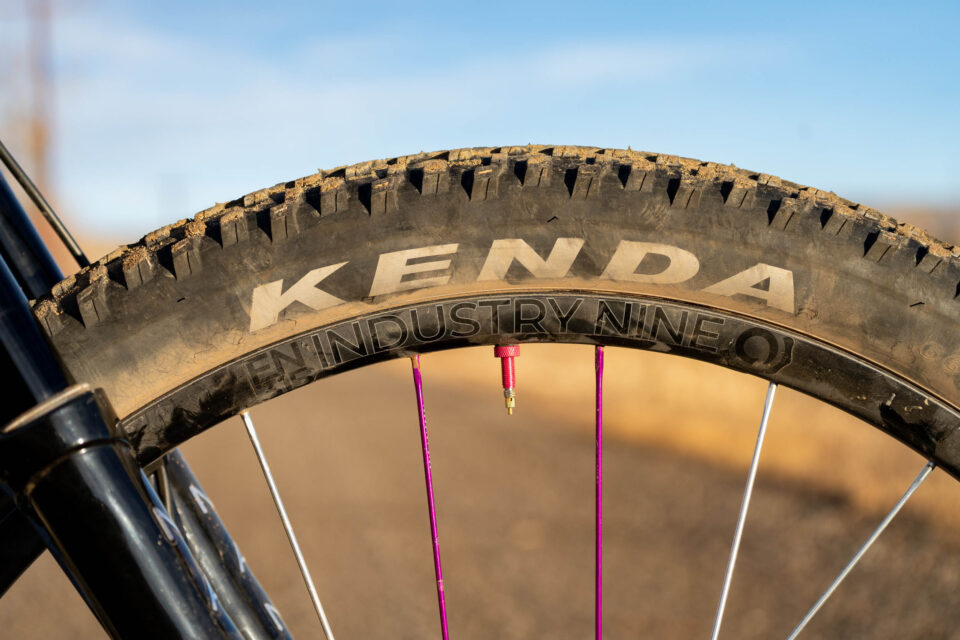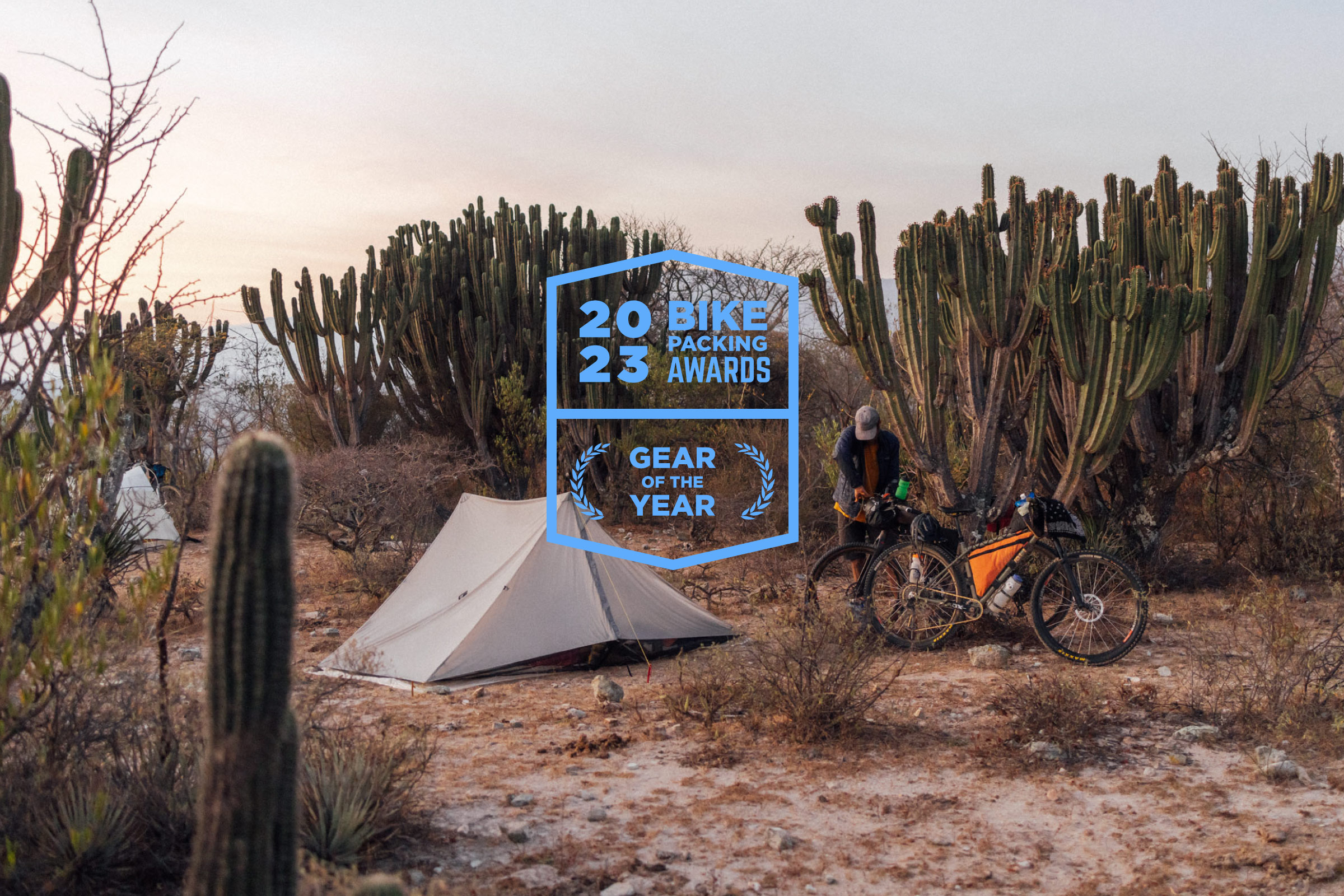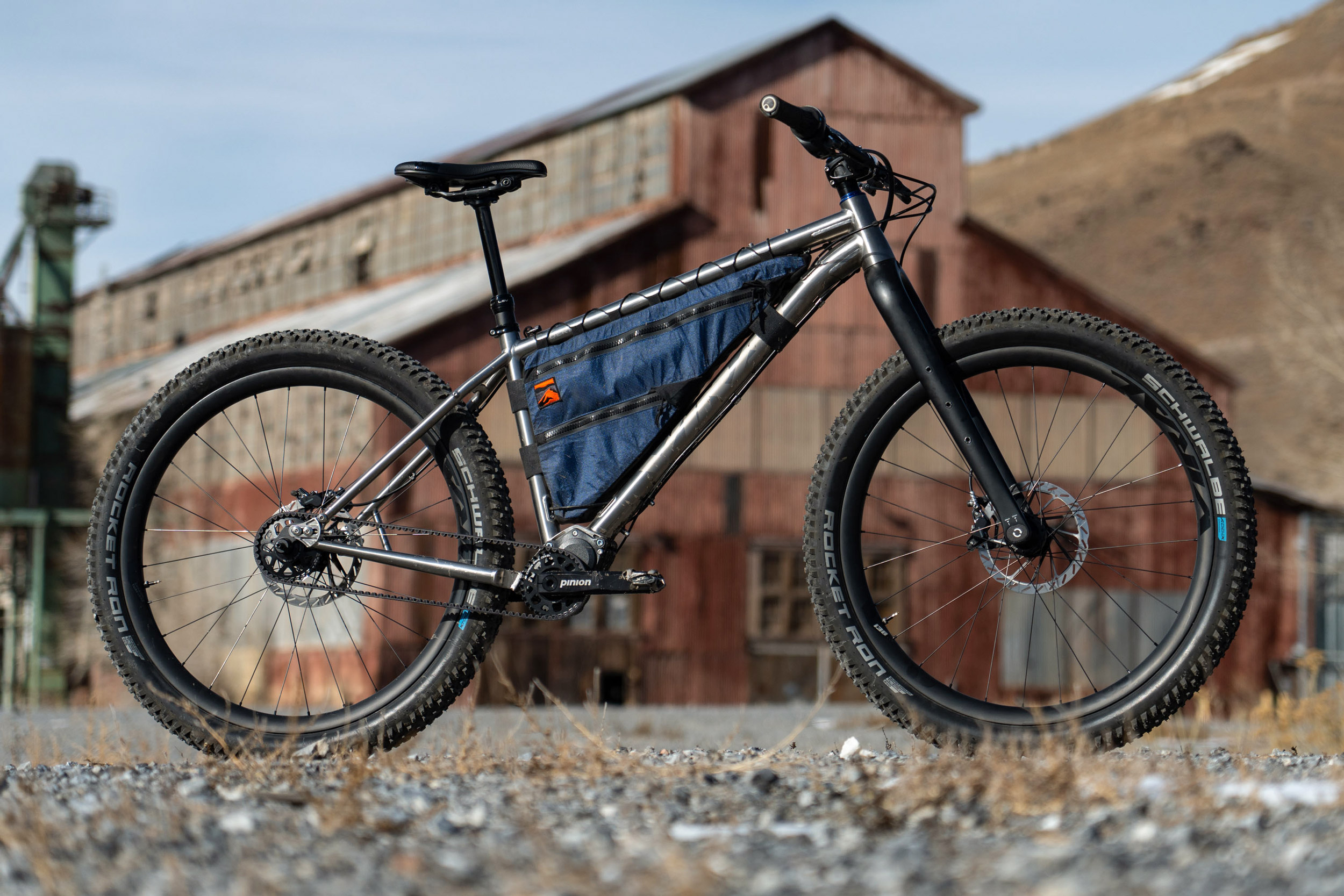Pipedream Sirius S6 Review
How does the slackest bike we’ve ever ridden perform out on the trail? The answer might surprise you. Learn more in our review of the Pipedream Sirius S6, the brand’s latest hardtail that improves on the S5 we reviewed last year with the same unique geometry rolled into a beautiful titanium frame with loads of mounts…
PUBLISHED Dec 7, 2023
Ever heard of a “hardcore hardtail?” British bike companies have been all about this style of steel steed for years, and U.S. bike companies are now using many of the same geometry principles. Last year, things got interesting when we tested the Sirius S5. Its extremely low stack height and ultra-slack head tube angle were built around a very short travel fork, and this combination of elements was something that we hadn’t seen before. Better yet, it added up to a far better and more versatile hardtail than we expected and changed the way we think about this style of bike. So, when they teased the launch of the S6, which was built with the same geometry, a titanium frame, and loads of mounts, we had to give it a try. How does the slackest bike I’ve ever pedaled ride? Watch the video review to find out, and scroll down for specs, photos, a build kit, and more details.
History of the Sirius S6
Alan Finley, the founder and lead designer of Pipedream, has crafted a diverse steel bike lineup since starting the brand in 2005. The brand now has a significant lineup, ranging from the Pipedream A.L.I.C.E. I tested last year to the Full Moxie, a full-suspension rig with generous travel. Named after the brightest star in the night sky, the Sirius holds the distinction of being the longest-standing bike in the Pipedream lineup. Originally designed by Alan back in 1997, it has undergone six iterations, continually evolving in the process. While the S6 maintains the same geometry as the S5, it’s built from titanium with a few new frame features that we’ll explore in this review.
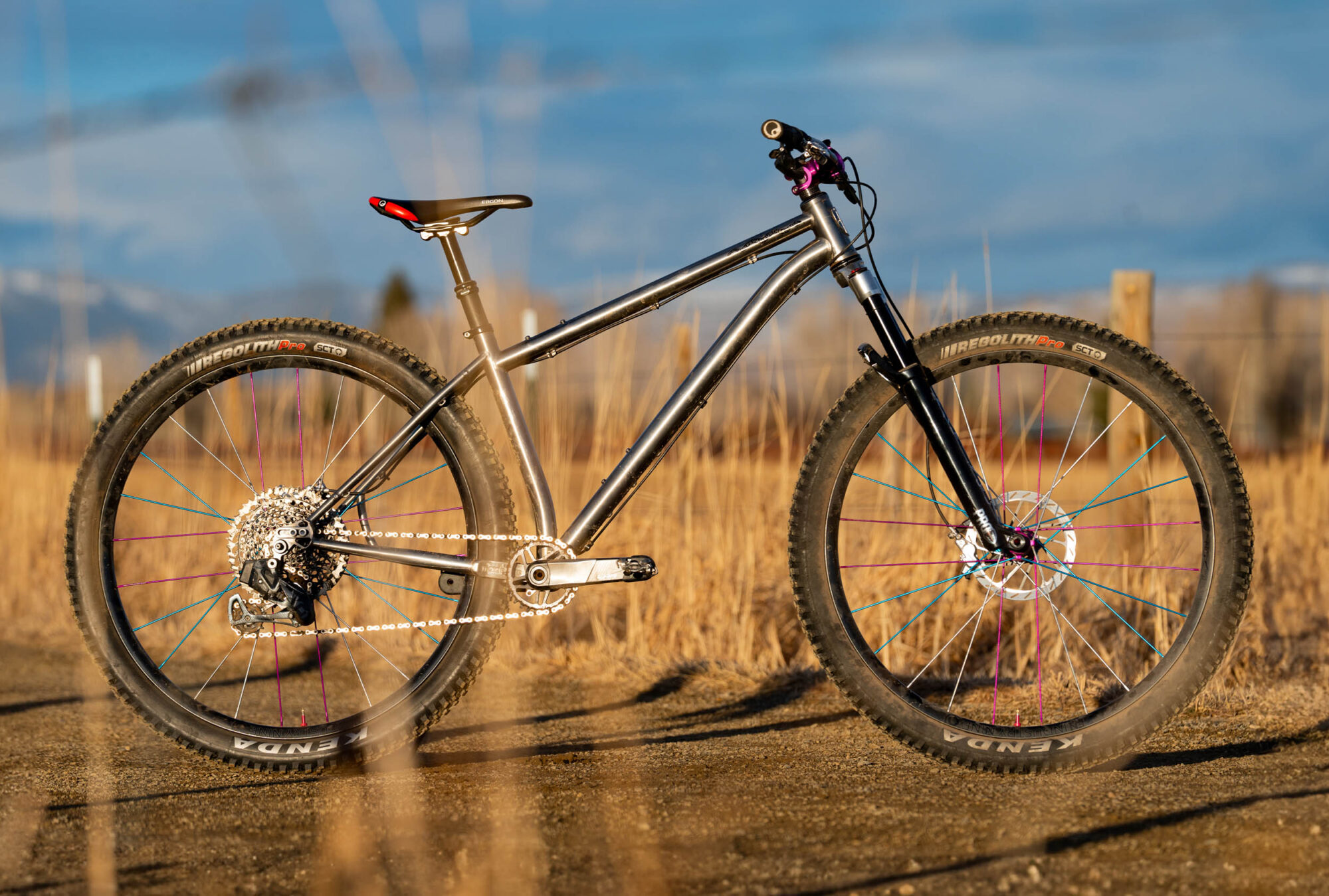
What exactly is the Sirius S6? On paper, it’s a Boost-spaced, short-travel hardtail optimized for 100-120mm 29er forks and designed to fit 29 x 2.6″ or 27.5 x 2.8″ tires, but this bike is not that simple.
Frame Sizing
Funny enough, the bike was first sent to Logan for review. He tested the S5 earlier last year, and it only made sense to compare the two. It wasn’t until after he built up the bike from scratch and pedaled it out to get photos when he realized it was the Long (medium) version. Logan is 6’0″ (183cm) tall, and Pipedream recommends the Longer size based on his geometry. I’m 5’9.5″ (176.5cm) and fall right in the middle of the sizing recommendations for the Long. So, to say I’m happy they sent Logan the wrong size is an understatement, and you’ll soon learn why. It’s also worth mentioning that the Sirius S6 only comes in those two sizes. If the Long is too much bike, you may have to resign to the steel Sirius S5. It comes in a “Longish” size, which equates to a small.
Geometry Data
| Measurement | Long (M) | Longer (L) |
|---|---|---|
| Head Angle | 65 | 65 |
| Seat Angle | 77.5 | 77.5 |
| Seat Tube | 420 | 420 |
| TT (effective) | 612 | 632 |
| HT Length | 110 | 115 |
| BB Drop | 64 | 64 |
| Chainstays | 425-441 | 425-441 |
| Wheelbase | 1177-1193 | 1199-1215 |
| Reach | 465 | 485 |
| Stack | 591 | 596 |
The Long was a perfect fit. The lower stack and longer reach is inspiring to ride. I absolutely love the 460/465 reach zone, and the lower stack gave me a better feel of the bike on the trail. The frame also has loads of standover, which takes away potential frame bag space. However, the short seat tube allows for a serious amount of dropper post travel. The Long and Longer versions share the same seat tube length—something Pipedream has done consistently with the Sirius. I spec’d mine with a 170mm Fox Transfer, but it could likely fit something bigger.
Ordinary is Boring
On first glance, the S6 may resemble an ordinary hardtail, but upon closer inspection, you’ll appreciate its beautiful frame with flawless welds and pleasing curves. It looks sharp, but the secret sauce is hidden in the numbers. We talk about progressive geometry all the time these days. Progressive in today’s bike world is defined by slacker head angles, longer front centers, shorter stems, and so on; the Sirius S6 has all of this in a package designed around a 100-120mm fork. While that might sound a little odd—especially with a bike that otherwise appears to be a very “hardcore” trail hardtail—the S6 comes with a claimed 65° sagged head tube angle, based on using a 100mm-travel fork, a 77.5-degree seat tube angle, and a 752mm front center. It works pretty well as it rides much bigger than the fork travel might indicate. Despite their claimed numbers, I did a quick measurement at home, and I realized that it’s the slackest bike I’ve pedaled to date, coming in at 63 degrees un-sagged and 63.9 degrees at 20% sag with a 120mm fork.
The Long S6 comes in at 4.8 pounds or 2.18 kilograms and is made from a magical (yes, I said it) multi-butted 3AL/2.5V titanium tubeset. Pipedream is no stranger to using the material, having made many bikes out of it over the course of two decades. However, the S6 is currently the only Ti frame in their lineup.
The CNC-machined yoke and frame ends, where the sliding dropouts attach, are made from a stronger and stiffer 6AL/4V titanium. And just like the S5, the S6 also comes with 16mm sliding dropouts, giving the bike loads of adjustability and allowing for ample tire clearance. Finally, the top tube is somewhat ovalized near the headtube and comes without external reinforcing gussets. This gives the frame a clean and polished look, a characteristic it also shares with its steel S5 sibling.
Climbing and Descending
When Logan was testing the Sirius S5 last year, he mentioned it took some getting used to. And while I’ve been there with others review bikes, I felt the opposite with the Sirius S6. Right away, I felt at home. Perhaps my body was primed for this geometry after riding the REEB SST for the better part of the summer, or maybe I was mentally prepared after reading Logan’s review (and heading him say how much he enjoyed it).
Whatever it was, I had serious flashbacks of the SST. While the S6 certainly offers a bit more quickness, especially on the flats or non-eventful climbs, the way it handled technical climbs reminded me of the SST. It allowed me to slow down or even track stand, giving me time to rebalance and power up a section of terrain that was more challenging. But the beauty here was that I never felt the longer front center to be too long, and only on the steepest of climbs would I need to shift my weight to the front of the saddle or stand up. Let’s not forget that this is still a hardtail, and on some technical uphill sections, I found my rear tire skidding out or jumping around, which normally could be handled better with rear wheel tracking of a full-suspension bike, but we’re not here to compare apples and oranges, despite the similar climbing characteristics between the two.
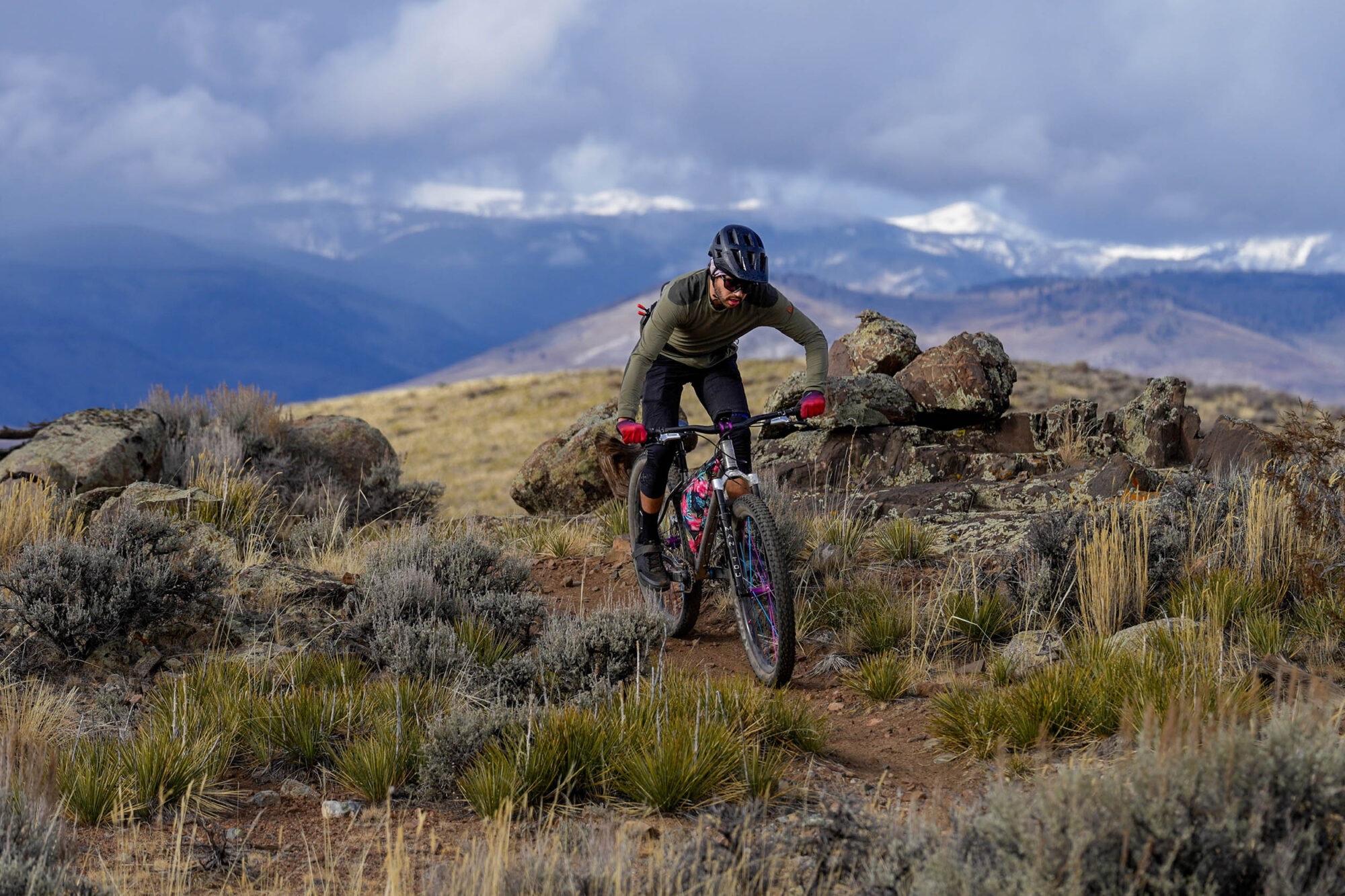
Descending is where this bike truly excels. As stated earlier, the S6 instills a greater sense of confidence than one would expect from a bike optimized around a short-travel fork. With the longer wheelbase and the buttery titanium frame, what would typically be chunky, harsh sections of trail felt toned down. The relatively short-fork travel and low stack create a sweet spot, allowing me to consistently feel the front wheel track to the ground and giving me a very locked-in and grounded ride. It was an odd feeling that I found to be almost zen-like on the trail. But, at the same time, this bike can be very playful when you want it to be, and I noticed this on trails with some fun little rollers and lips. One thing that was quite annoying was the chain slap without any stay protector, but it quieted down with a big piece of Shelter tape. You’ll likely want to do the same, or just add some bar tape.
Dropout Versatility
The S6 comes with their proprietary dropouts that are adjustable by 16mm, giving the bike a 425mm chainstay in the shorter position or 441 in the long, providing the ability to fine-tune the rear end while also quickly setting this thing up as a single speed option. I tested the bike in both the 435 and 425mm positions. Despite only 10mm of difference, there were some interesting changes to the ride experience in either setting. The shorter rear end noticeably helped me get around tight corners, which helped move the front end quicker, but it was not as comfortable, and I found it rattled me around more. I preferred the 435mm length, as it gave me a more grounded, sure-footed feeling on fast descents and also helped me navigate slow-speed, technical climbs more efficiently without too much of a sacrifice in handling.
I tested the S6 fitted with two pairs of 29 x 2.6” tires mounted to 31.5mm internal rims. The first set I tried was the Vittoria Mezcal, which measures a little wider than 2.6″. The second pair, the Kenda Regolith Pros, are pretty true to size at 2.57″ inches. As a rear tire, the Kenda was tight between the stays in the forward position and rubbed the yoke when flexing. The Mezcals didn’t work in the forward position. It’s not that big of a deal since you can push the dropouts back a touch, but it’s worth noting. And if I’m being picky here, I did end up losing the adjustable dropout screws on the first day, so make sure they’re tight after taking off on your first ride. Luckily, my hardware store had a 30 and 40-mm M5 bolt and nut to mimic the screw, which I used with success.
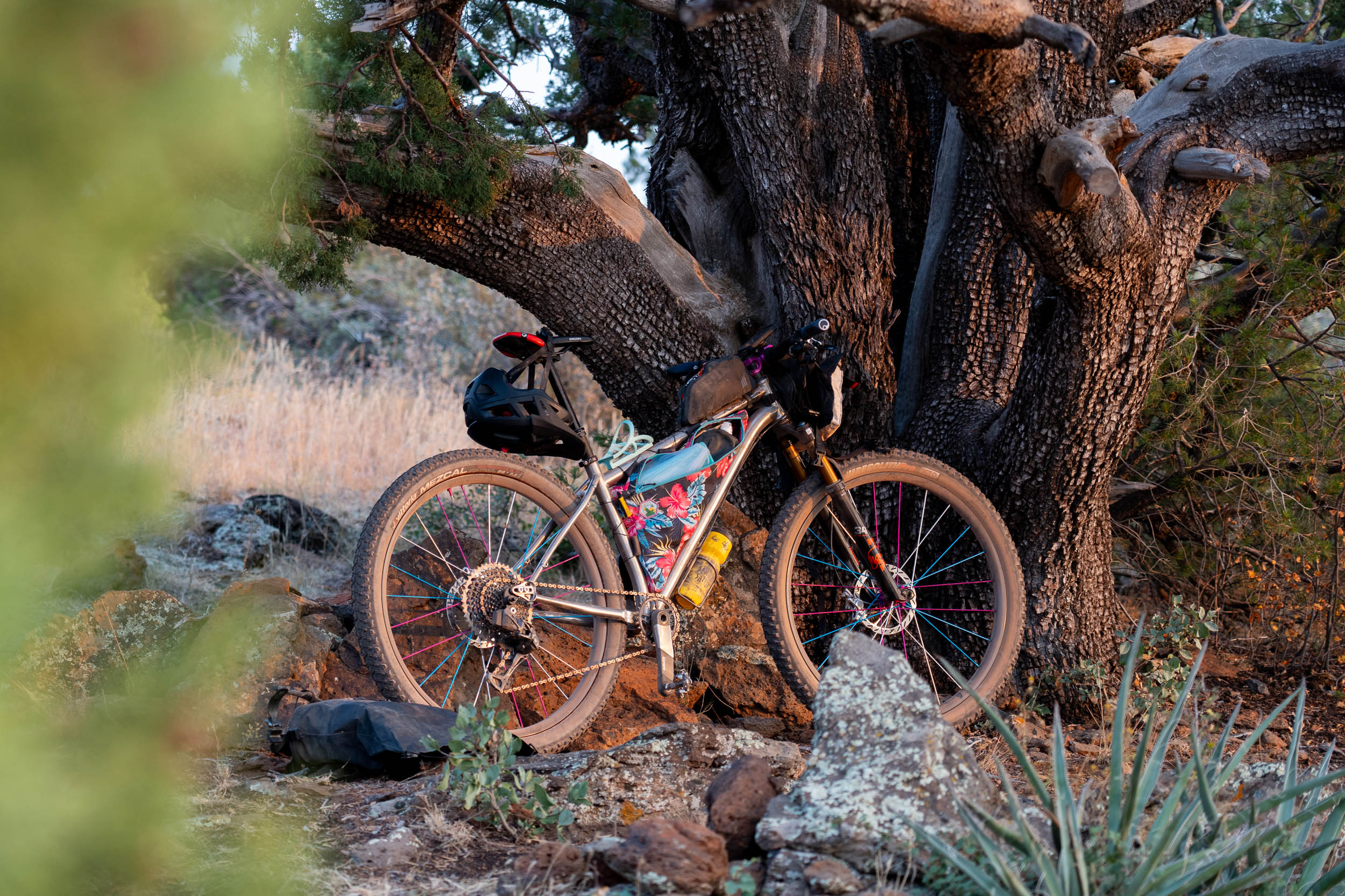
While Out Bikepacking
Unlike the S5, which essentially has no bikepacking-forward features, the S6 is loaded with them, which makes this bike that much more attractive. That’s also partly why it won an award in our annual Gear of the Year post, which you can find linked below. It’s also incredibly compliant when the bike is when loaded up. I took the S6 on a five-day journey along the Coconino Bikepacking Loop in Arizona; from the lava rock-filled singletrack out of Flagstaff to the sandstone ledges among Sedona trails, it handled chunky terrain with confidence. After a big descent or challenging climb, I kept asking myself if I was really on a hardtail with noticeable flex. It made for a much more enjoyable experience over some long days in the saddle. Paired with its capable geometry, I rode harder on this bike than any other loaded hardtail I’ve been on. The only thing holding me back was the Tailfin Aeropack; it would get in my way on steep descents, which had me thinking about wanting a slightly shorter arch to lower the load, but I’ll bug Tailfin about that. The S6 also has lower rear rack mounts, so I could’ve used a different rack instead of relying on the Tailfin system with the axle kit.
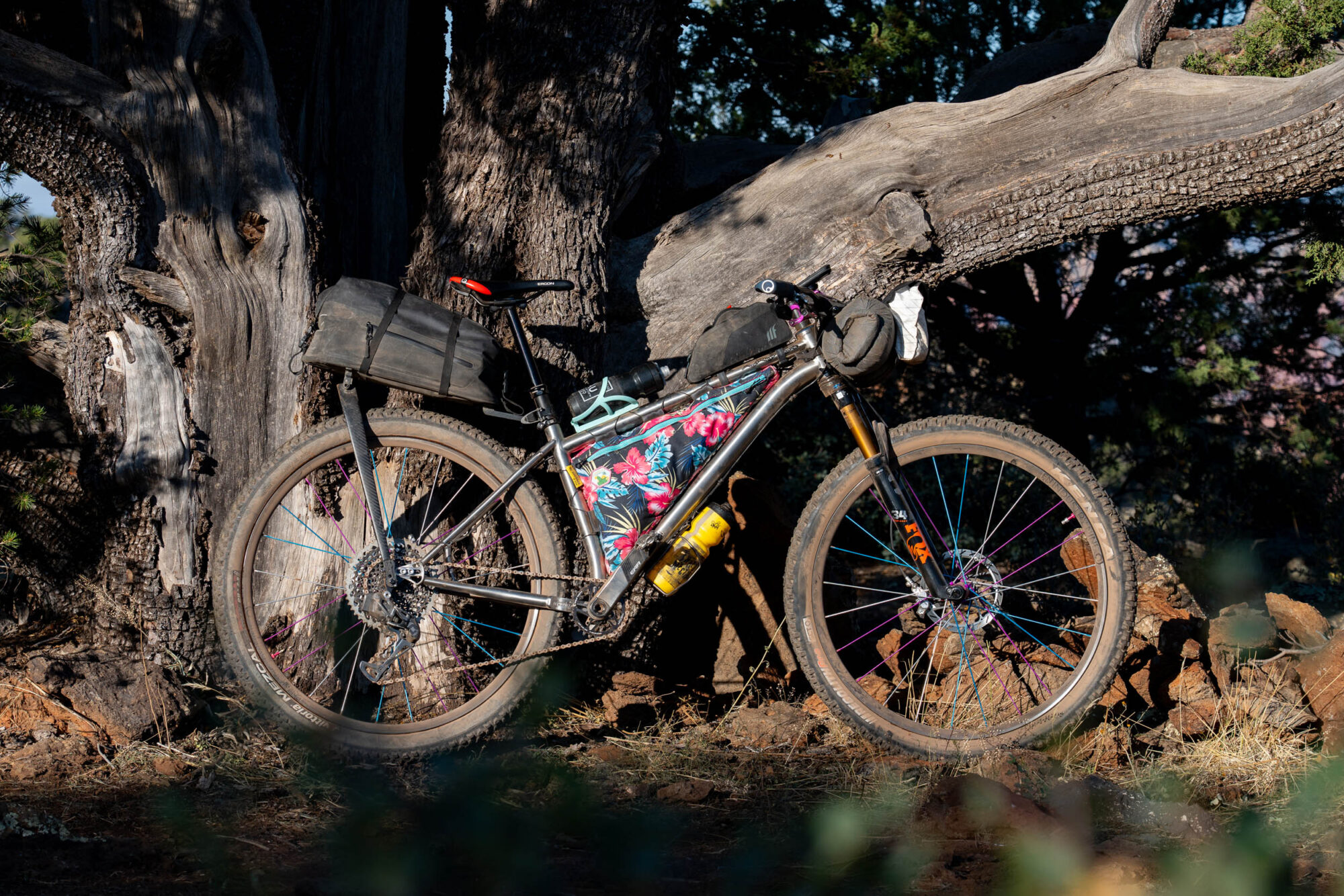
The frame is equipped with two bosses near the rear end of the top tube. This is the first time I’ve seen such mounts in this position, and I absolutely loved the secure water bottle storage in that position. I would love to see a pair of mounts up near the headtube, too. The frame also comes with three-pack mounts on the underside of the down tube, and despite only having two inside the triangle on this pre-production frame, the final frames come with five mounts on the inside of the downtube—a three pack and a pair. It also comes with ISCG mounts for a bash guard, and except for the dropper routing, the bike sports fully external routing. However, the position of the cable guides on the underneath side of the top tube has worn a hole in my custom Curiosity frame bag, so I wouldn’t mind seeing guides that are perhaps less pointy or similar to the ones found on the downtube.
Speaking of the frame bag, it’s worth mentioning that this beautiful frame bag built by Arly of Goodday was the perfect tool for the job. I brought the frame in before I built it up so we could visualize a few color-matching options in person, which is the way to go. I love the dual zipper pulls; they have proven to be durable, as has the rest of the bag, and the fit within the frame and overall width was perfect.
The coolest bike I’ve built?
The Sirius S6 is sold as a frame only, which might be more work than some folks want to take on, but it lets you customize the bike around your needs. It allowed me to use some parts I had lying around and some that are in for review. However, if you need to get a little head start on the build, Pipedream also offers add-ons. Specifically, they have a finishing kit with a headset, top cap and bolt, headset spacers, and a seat clamp.
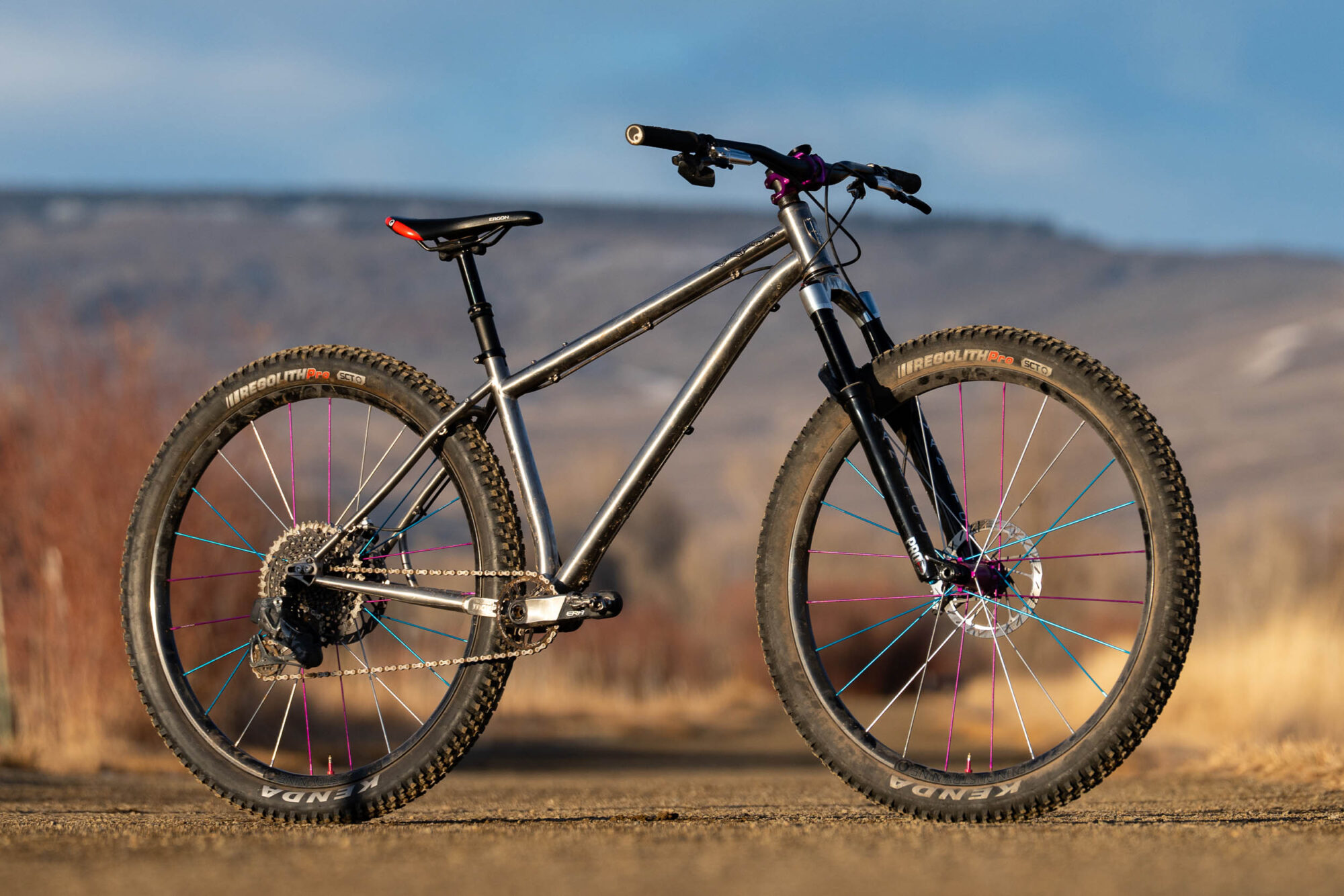
As with most progressive mountain bikes these days, the S6 is designed around a fork with a 44mm offset, as designers believe shorter offsets work better with slacker head tube angles. This is likely another factor as to why this bike holds a line so well, but in turn, I did notice a bit more wheel flop, mostly at slow speeds or when I was trying to balance the bike for photos and video. As for forks, I started my test period using a Fox Stepcast 34 before I got my hands on the Manitou Mattoc Pro, which I much preferred. Not only does the Mattoc’s crown match the titanium frame, but the reverse lowers also look great. Plus, it’s stiff, was super easy to dial in, feels very predictable through all of its travel, and it’s internally adjustable from 110 to 150mm. Stay tuned to my full review of this fork.
The other big part of the build is the stunning Industry Nine Enduro 315 wheelset, which features some purple hubs and an excellent spoke designed by yours truly. Note that 2.6-inch tires mount nicely to 31.5 mm rims, giving the tire an excellent balanced profile. I love the Kenda Regolith Pros; they certainly roll slower than the Mezcals, but not bad in the big picture of tires out there. They also grip well in dry conditions and even snow, all at a very inviting price point.
I used the new Race Face Era cranks on this build, and they were great. They help keep the weight down on the bike, and they’re also stiff and have proven to be surprisingly durable. I haven’t experienced too many pedal strikes with the 64mm BB drop, but I also adapt quickly to bikes in this regard. I love that silver wear protector, which plays well with the theme of the build with the sliver fork crown and the new Level brakes. I have not had the best experiences with the new brakes from SRAM, but this version performed better than others I have tested, although the stopping power doesn’t live up to that of TRP Travel Evos or Shimano XTs.
- Frame Pipedream Sirius S6 (Long)
- Fork Manitou Mattoc Pro (120mm)
- Wheels Industry Nine Enduro 315
- Front Tire Kenda Regolith Pro (29×2.6)
- Rear Tire Kenda Regolith Pro (29×2.6)
- Crankset Race Face Era, 30T chainring
- Derailleur SRAM AXS 12-speed
- Shifter SRAM AXS 12-speed
- Cassette SRAM Eagle 10-52T
- Bottom Bracket SRAM DUB
- Handlebar Salsa Guide 35mm handlebar
- Stem 50mm Race Face
- Headset Cane Creek 40
- Brakes SRAM Level Stealth
- Saddle Ergon
- Seatpost Fox Transfer
I used a 50mm Race Face stem and an 80mm Salsa Guide 35mm handlebar with 20 dgrees of rise, which helped me dial in my reach. Other components include a Cane Creek 40 headset, a blue Wheels Manufacturing bottom bracket, and a first-generation SRAM AXS Eagle drivetrain. It’s somewhat of a dream build, and I’m very happy with how it all came together. Oh, and not all seat collars are created equally; I purchased an off-brand collar and it just wouldn’t hold the seat post up after a big compression, even with carbon paste. As a result, I had to get one from a bike shop mid-trip, and the issue resolved itself. Logan had the same issue with the S5 he reviewed and fixed it using the excellent Hope seat post collar.
- Model/Size Tested: Pipedream Sirius S6, Long
- Actual Weight (frame): 4.8 pounds (2.18 kg)
- Place of Manufacture: Taiwan
- Price: £1,700 (£2,040 in UK with VAT)
- Manufacturer’s Details: Pipedream Cycles
Pros
- Most inspiring descending hardtail I’ve pedaled
- Climbs very well for a bike this slack
- Buttery smooth titanium tubeset
- Loads of mounts, including double bosses at the rear end of the top tube
- Adjustable sliding dropouts
Cons
- Longish (S) and Longer-er (XL) sizes would be welcomed
- 2.6” tires don’t fit in the 424mm chainstay position
- Cable guides are a little sharp and pointy
- Some wheel flop at slow speeds
Wrap Up
Sometimes, I struggle to define what a bike means to me, but what’s not hard to explain is that 2023 has been the year of testing some of the most fun bikes I have ever pedaled. I’m also grappling with the fact that the Pipedream Sirius S6 is at the top of that list. Being an ex-racer, I still prioritize a bike that can climb well, and I was pleasantly surprised that Pipedream figured out how to incorporate a quick and relatively agile geometry into their bike while making a bike that’s unbelievably confident in handling everything I threw at it without needing a long-travel fork.
Paired with Pipedream’s excellent selection of titanium tubing, a variety of gear mounts, and an overall pleasant aesthetic, it helps make this bike not just a top bike for 2023, but maybe the most capable bike I’ve pedaled to date. Because of my positive experience, I was chatting with Alan about sending the bike back but instead asked if I could buy it from him. He quickly sent over an invoice; Christmas came early this year.
The Pipedream Sirius S6 frame comes in at £2,040 ($2,600 USD), which is certainly not the cheap, but the titanium tubes and added mounts are significant upgrades. The question is, are these enhancements enough to justify the cost over the £699 steel version? Let me know below!
Further Reading
Make sure to dig into these related articles for more info...
Please keep the conversation civil, constructive, and inclusive, or your comment will be removed.







